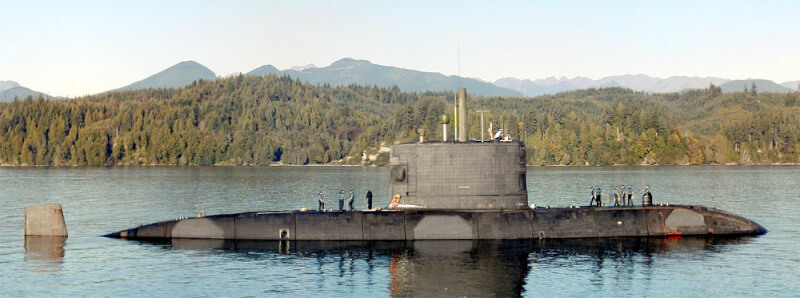
HMCS Victoria arrives at Naval Submarine Base Bangor in October 2004. [Wikimedia]
Even though most positions in the Canadian Armed Forces had been open to women since 1989, submarines had remained operated by only males due to the “cramped conditions” on Oberon-class boats. However, when the CAF acquired four Victoria-class subs in 2001, the more spacious and private vessels allowed Canada to join Norway, Sweden and Australia as one of the first countries to allow women as submariners.
In 1998, Canada purchased the four new-to-them submarines from the British government, which were delivered during a four-year period. Compared to the Oberon class, the Victoria-class subs required smaller crews and had room for separate change and bathrooms. So, after years of continuous effort to break any remaining limitations on female employment in the armed forces, the CAF had finally come to review submarine restrictions.
With officials believing that the “minimum level of privacy” for female crew members was met, and 27 per cent of female sailors interested in working underwater, the military formally allowed women to serve on submarines on March 8, 2001. Though they initially faced some opposition, many senior officers opposed to them in combat roles, women now comprise nearly 21 per cent of Canada’s navy.
Advertisement





















